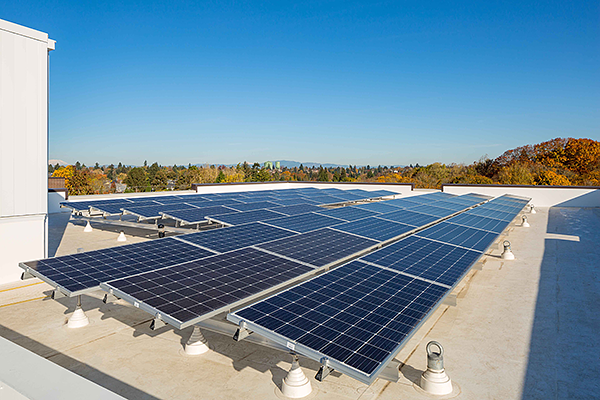 Leveraging EMEF’s funding
Leveraging EMEF’s funding
The Edwards Mother Earth Foundation Energy Efficiency Policy Program aimed to change state-level policies to incentivize and/or require electric utilities to increase energy efficiency for their customers. EMEF made the first grants under the program in 2008 and its final grants under the program in Spring 2018; the program concluded in Spring 2019. Ultimately, EMEF supported grantee work in eight states: Arizona, Arkansas, Colorado, Georgia, Idaho, Illinois, Missouri, and Ohio.
EMEF’s granting program had significant successes, both quantitative and qualitative. While the quantitative results below are almost certainly understated, EMEF grants helped leverage:
- an increase of at least $565 million in utility energy efficiency program spending and total spending of at least $4.7 billion;
- an increase of around 3,800 GWh/year in first-year energy savings and total first-year energy savings of more than 36,000 GWh;
- at least $7.7 billion in total net savings for households and businesses from programs implemented each year; and
- more than 89 million tons overall of avoided CO2 emissions over the lifetime of energy efficiency measures installed by programs each year (equivalent to what more than 22 typical coal-fired power plants would emit in a year).
EMEF funding also helped to flatten electricity demand and hasten the closure of coal plants.
These gains were achieved via a range of state policy successes, including:
- getting one of the toughest Energy Efficiency Resource Standards (EERSs) in the country adopted in the very conservative state of Arizona in 2010 (and EMEF repeatedly defended it and got it implemented);
- securing consideration of non-energy benefits in Arkansas;
- achieving a major ramp-up of funding for and energy savings from utility energy efficiency programs in Colorado;
- changing the way low-income energy efficiency programming is done in Georgia;
- expanding the use of decoupling by Idaho utilities and achieving new ways of calculating the value of energy efficiency and demand-response measures;
- getting a groundbreaking smart thermostat program, a shift in lighting programs to focus on LEDs, and programs to reduce “wasted energy” in commercial buildings in Illinois;
- helping to drive Ameren Missouri’s new 6-year efficiency portfolio, which includes a significant increase in spending on efficiency programs; and
- defending the Energy Efficiency Resource Standard in Ohio against constant attack.
In many EMEF states, perhaps the greatest legacy of the work of EMEF’s grantees is that utility energy efficiency has become routine; the frameworks and processes have basically become embedded, ensuring a solid base for lasting future progress.
Overall, though, EMEF’s original theory of change – focusing on energy efficiency, policy, and states to make an impact on climate change – was borne out. Efficiency was a focus that had a significant impact on reducing emissions, had a strong economic basis that helped it advance even in conservative states, helps people from very diverse backgrounds, and was receiving much less attention and funding than renewables. EMEF’s focus on policy helped leverage broader meaningful changes that will last, even if the policies are later changed. Whatever happens to the policies going forward, advocates in the states will be starting from a higher place than they otherwise would. States were the proper geographic focus for the program given the focus on utilities and EMEF’s level of spending, and state policies are surviving better than federal ones in the Trump era. In particular, grantees praised EMEF’s decision (and willingness) to invest in conservative, non-coastal states and in states that were not efficiency leaders but had good potential for progress. All in all, grantees praised EMEF for deploying its grants in a targeted way, focusing its limited resources on filling a specific, underserved, unglamorous niche and achieving impressive results.
To advance this theory of change, EMEF pursued a range of strategies designed to expand and enhance the traditionally wonky advocacy around efficiency. Feedback from grantees suggests that these strategies achieved mixed results. For instance, EMEF’s strategy of having a mix of both technical and advocacy/grassroots grantees worked brilliantly in some states – leading to multi-tooled, effective, cohesive state teams – and poorly in others, where the grassroots advocates were less effective and the teams did not gel. Likewise, EMEF’s strategies to support adding business voices to the advocacy mix and to support humanizing communications about efficiency – both of which emerged over time – worked better in some states than in others.
Although EMEF is leaving the field, more remains to be done. The basic work of pushing new policies and programs, educating commissioners, and engaging in utility processes must and will continue. There is also a need to figure out the next generation of efficiency programs and policies, boost customer participation in utility efficiency programs, and work on integrating a range of clean energy resources (including efficiency) into powerful portfolios. Furthermore, where they might prove useful, there is a need to replicate some of the efforts made under the EMEF program to expand the traditional efficiency advocacy toolbox, such as the focus on putting a human face on energy efficiency. Hopefully others will pick up the mantle and continue to advance the progress that EMEF has helped to spur.
Go here to read some real-world examples of the impact of work funded by EMEF grants.
NOTE: The information and data presented on this page was collected and made possible in large part by EMEF’s consultant partner David Gardiner & Associates.
